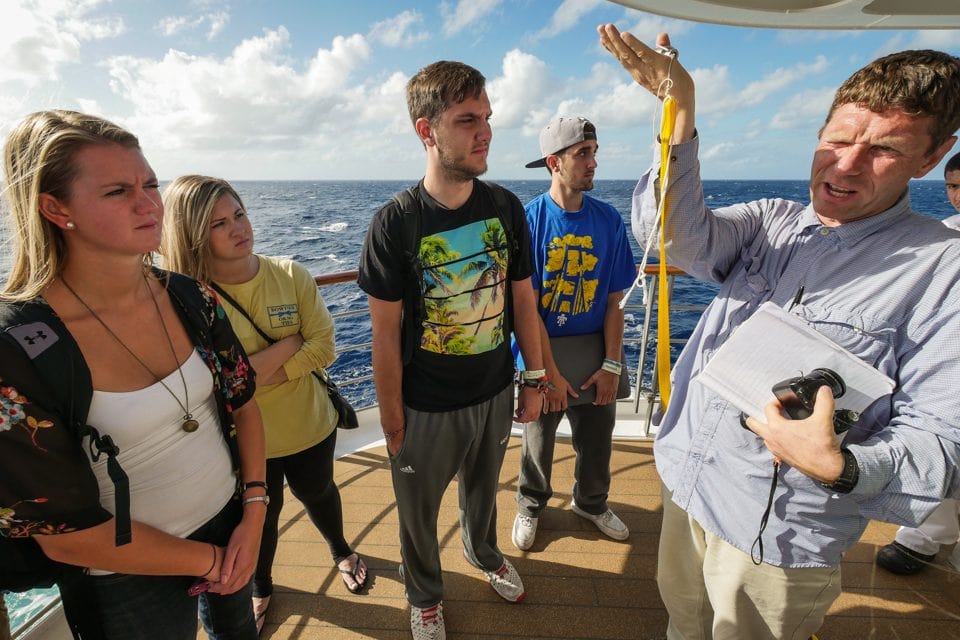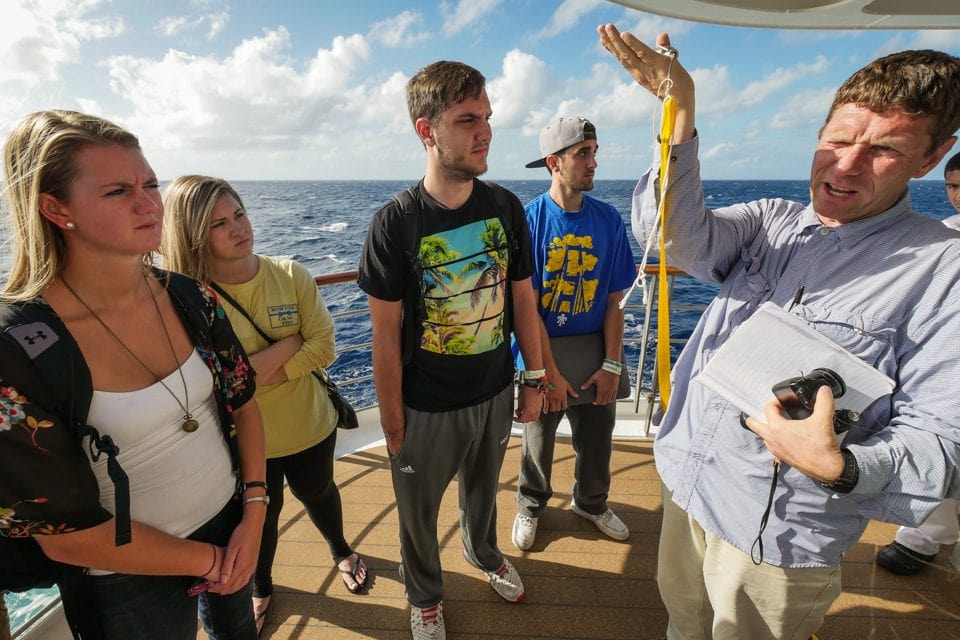
16¬∞ 20.00’N 066¬∞ 12.6′ W may have seemed like just an ordinary set of coordinates, but for Professor Falk Huettmann and his Introduction to Oceanography class this was just one of the target locations for their Argo floats during Fall 2014.
As part of the Argo floats program, the voyage deployed six Solo 2 model floats in the Atlantic Ocean. All six floats came on board the MV Explorer when it was docked in Cadiz, Spain. Four of the floats were deployed just prior to the ship’s arrival in Rio de Janeiro, Brazil, and two were deployed the day following the ship’s departure from Barbados.
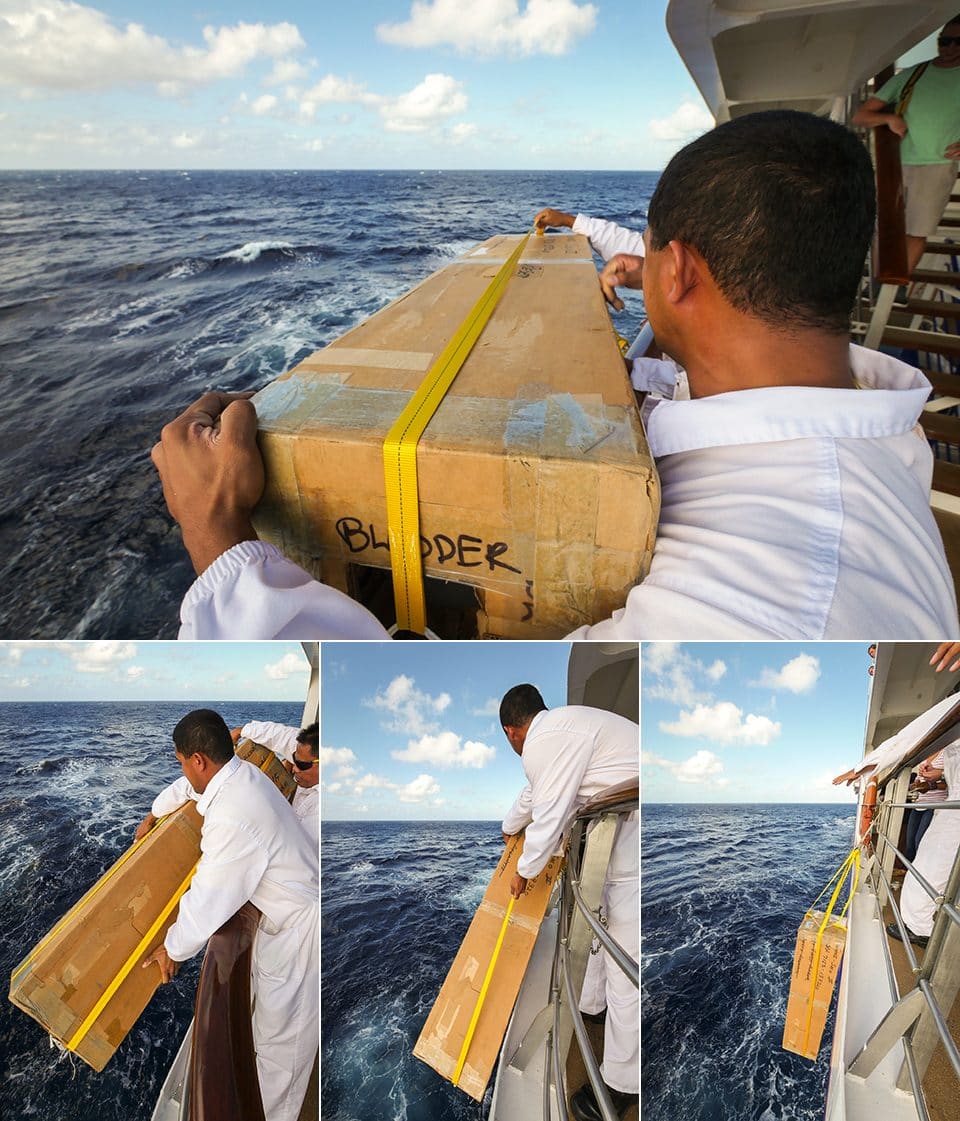
The locations of the drops are determined by the Argo organization to help fill in gaps and provide the largest cross-section of data possible to participating scientists. Once the coordinates were provided, the professor and crew were set in direct communication with the staff captain and officers on the bridge. Some of the floats were released in the middle of the night and others in the morning, as their locations had to be precise. After the floats hit the water, they open and the scientific instrument inside becomes a passive drifter, eventually dropping to an exact depth of 2,000 meters. Its holding container is water-soluble and degrades after it hits the water. The instrument released measures the pressure, temperature, and salinity of the water at these depths. Once fully active, data from the censor is transmitted in real time using a satellite.
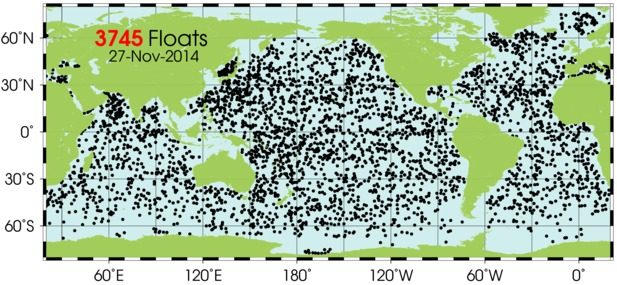
Professor Huettmann was particularly interested in the Argo floats program for its network of data that participants share, and the access it would give to his students. With 3,745 active floats (as of November 27, 2014) across the world, the Fall 2014 voyage’s participation in the program grants them access to information produced by the entire network. “(Without Argo floats) you would have no access to data at these depths,” said Huettmann. Throughout the semester, Huettmann’s class has been using data from a float that was activated and deployed in 2012.
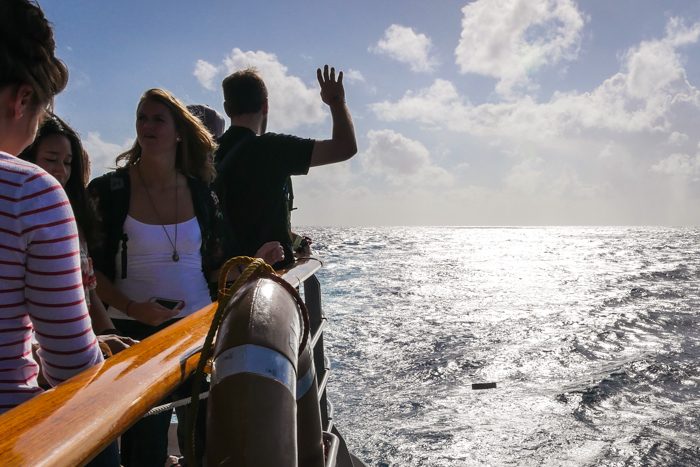
The floats that the Fall 2014 voyage deployed will remain active for four to six years, pending the battery life which varies in different temperatures of water. In 2012, Semester at Sea deployed 11 floats between the ports of Cape Town and Montevideo. All of the floats from the 2012 voyage are still operating today. The data from the floats deployed on the Fall 2014 voyage will be available to Argo’s network of contributors ten days after the drop and will produce a new profile every ten days for at least four years.
Photos by: Joshua Gates Weisberg
